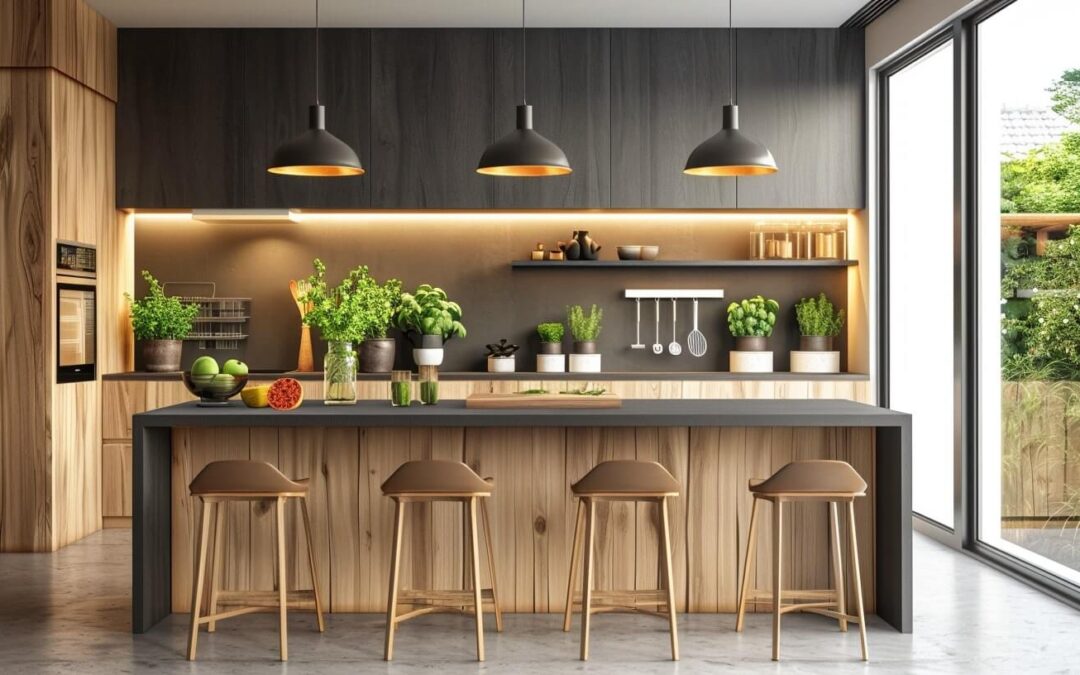When you’re considering adding a kitchen island, partnering with a contractor can make all the difference in achieving a functional and aesthetically pleasing result. You’ll need to assess your kitchen space carefully, defining your needs and preferences while keeping traffic flow and appliance access in mind. As you collaborate with your contractor, discussing materials and design options becomes crucial. However, the journey doesn’t end with the initial plan; there are several key aspects to consider that could impact the final outcome significantly. What might those aspects be, and how can you ensure everything aligns perfectly with your vision?
Assessing Your Kitchen Space
When assessing your kitchen space, start by measuring the dimensions of the area where you want to place the island. Take note of both the width and length, ensuring you leave enough room for traffic flow and access to appliances.
Next, consider the height of the island; it should complement your existing countertops for a seamless look.
Think about the layout of your kitchen: is it open or closed off? An island works best in an open layout, but you can still make it fit in a smaller space with the right design.
Defining Your Needs and Preferences
Once you’ve assessed your kitchen space, it’s time to define your needs and preferences for the island.
Think about how you plan to use it—do you need extra prep space, additional seating, or a spot for appliances?
Consider your cooking habits; if you often entertain, a larger island might be beneficial.
Also, think about the style that suits your home—should it be modern, traditional, or a mix?
You’ll want to match the island’s design with your existing decor.
Don’t forget about storage; incorporating cabinets or shelves can help keep your kitchen organized.
Make a list of must-haves versus nice-to-haves to guide your discussions with your contractor, ensuring you create a functional and stylish addition to your space.
Choosing the Right Materials
Selecting the right materials for your kitchen island is crucial to ensuring both functionality and aesthetics. You should consider materials that complement your existing kitchen design while also meeting your practical needs.
For the countertop, options like quartz, granite, or butcher block offer durability and style. If you want to incorporate seating, think about sturdy materials for the base, like hardwood or metal, that can withstand daily use.
Don’t forget about finishes; they can enhance or detract from the overall look. Choose colors and textures that harmonize with your kitchen palette.
Lastly, consider maintenance—some materials require more upkeep than others, so factor in your lifestyle and how much time you’re willing to invest in care.
Collaborating With Your Contractor
Effective collaboration with your contractor can make all the difference in achieving your dream kitchen island. Start by sharing your vision clearly; whether it’s size, style, or functionality, your contractor needs to understand your priorities.
Schedule regular check-ins to discuss progress and address any concerns. Be open to their professional insights—they often have valuable experience that can enhance your design.
Don’t hesitate to ask questions or request adjustments along the way; this is a joint effort. Establish a timeline that both of you agree on to keep the project on track.
Lastly, maintain a positive and respectful attitude, as good communication fosters a successful partnership. This collaborative approach ensures your kitchen island will be both beautiful and practical.
Finalizing Design and Installation
Finalizing the design and installation of your kitchen island is a crucial step that brings your vision to life. Review the final plans with your contractor to ensure every detail meets your expectations.
Discuss materials, colors, and finishes to guarantee everything aligns with your overall kitchen aesthetic. Confirm the dimensions and layout to maximize functionality and flow in your space.
Once you’re satisfied with the design, set a timeline for installation. Your contractor will coordinate the necessary permits and schedule the work.
During installation, stay in close communication to address any issues that arise. After the island is installed, inspect it carefully to ensure everything is perfect.
Enjoy your new kitchen island as the centerpiece of your culinary space!
Frequently Asked Questions
How Much Does It Typically Cost to Add a Kitchen Island?
Typically, adding a kitchen island costs between $3,000 and $5,000, depending on materials and design.
You’ll want to consider your budget, as well as the features you desire for your new space.
Will Adding an Island Impact My Kitchen’s Resale Value?
Adding an island can enhance your kitchen’s appeal, potentially boosting resale value.
Buyers often appreciate extra workspace and seating.
However, ensure it complements your layout and style to maximize its positive impact on your home’s worth.
Are There Any Building Codes for Kitchen Islands I Should Know?
Yes, there are building codes for kitchen islands you should know.
These often involve clearances, electrical outlets, and plumbing requirements.
Check local regulations to ensure your island meets safety and functionality standards before starting your project.
How Long Does the Kitchen Island Installation Process Usually Take?
The kitchen island installation process usually takes one to three days, depending on complexity.
You’ll want to prepare for some disruption, but your contractor will ensure everything runs smoothly and efficiently during the installation.
Can I DIY Any Part of the Kitchen Island Project?
You can definitely DIY certain aspects of your kitchen island project, like painting or staining, choosing materials, or even assembling components.
Just make sure you’re comfortable with the skills required for more complex tasks.
Conclusion
Incorporating a kitchen island that fits your space perfectly is a rewarding project. By assessing your kitchen, defining your needs, and collaborating closely with your contractor, you can create a functional and stylish centerpiece. Remember to communicate openly and check in regularly throughout the process. With the right materials and design, your new island will enhance both the usability and aesthetic of your kitchen, making it a space you love to cook and gather in.

